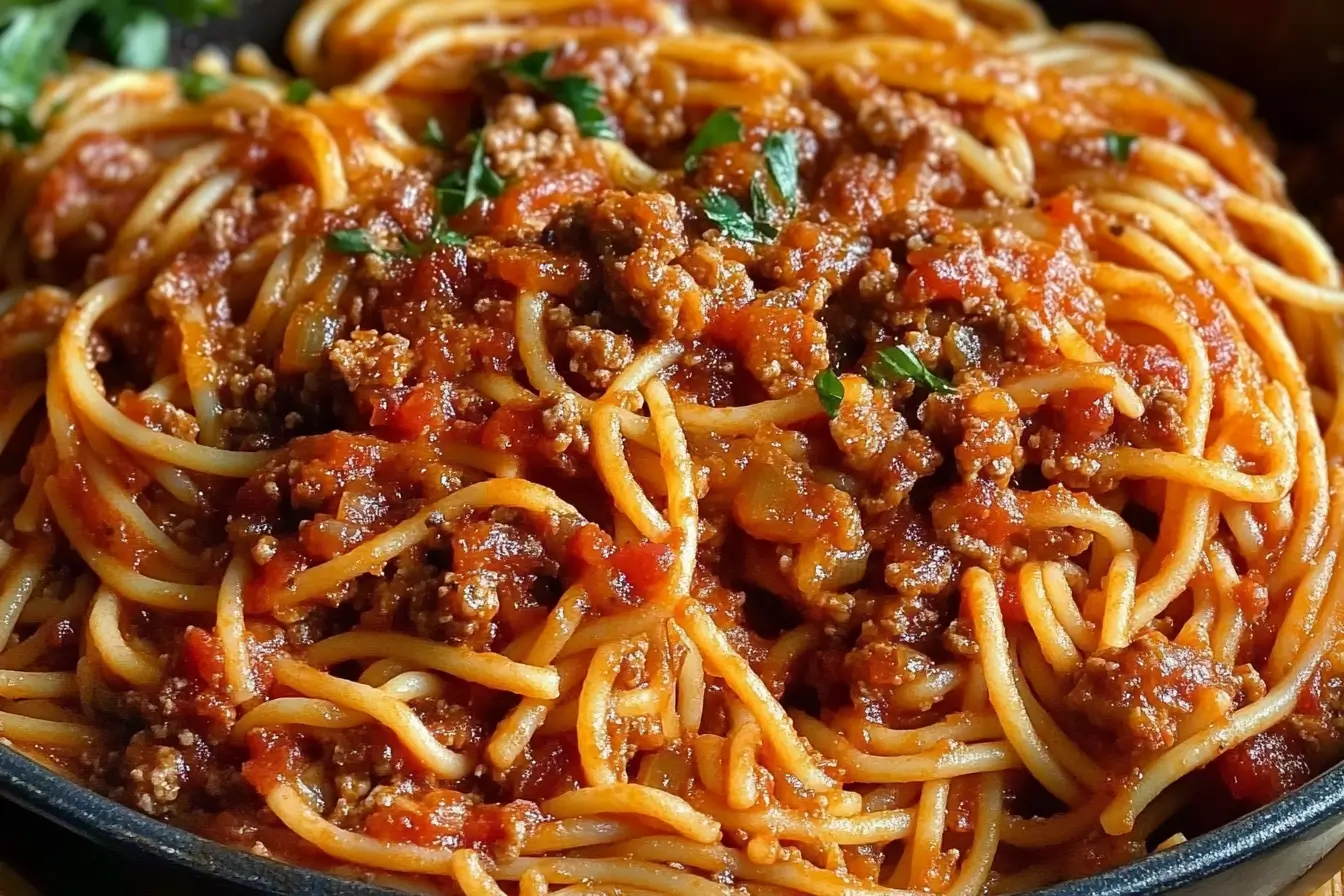Table of Contents
There’s something incredibly comforting and heartwarming about a steaming plate of old-fashioned spaghetti. With rich aromas of garlic, herbs, and simmering tomatoes filling the kitchen, it’s a timeless classic that evokes nostalgia and brings families together. But making spaghetti the traditional way isn’t just about ingredients—it’s about love, patience, and following a tried-and-true recipe that has been cherished through generations.
In this article, we’ll walk you through how to prepare authentic old-fashioned spaghetti from scratch, share pro tips for exceptional flavor, and help you avoid common mistakes that can ruin this delightful dish.
Ingredients for Authentic Old Fashioned Spaghetti
Here’s everything you’ll need to create mouth-watering old fashioned spaghetti:
- 1 lb spaghetti pasta (preferably durum wheat or semolina pasta)
- 2 tablespoons olive oil
- 1 lb ground beef or Italian sausage (optional)
- 1 medium onion, finely chopped
- 3 garlic cloves, minced
- 1 can (28 oz) crushed tomatoes (preferably San Marzano tomatoes)
- 2 tablespoons tomato paste
- 1 teaspoon dried basil
- 1 teaspoon dried oregano
- 1 teaspoon sugar (balances acidity)
- Salt and freshly ground pepper (to taste)
- Fresh basil leaves and Parmesan cheese (for garnish)
Step-by-Step Recipe: Old Fashioned Spaghetti
Follow these simple, clear instructions to cook perfect old-fashioned spaghetti:
Step 1: Cook the Pasta
- Bring a large pot of salted water to boil.
- Add spaghetti and cook according to package instructions until “al dente”.
- Drain pasta and set aside, reserving about ½ cup pasta water.
Step 2: Prepare the Sauce
- Heat olive oil in a large skillet or saucepan over medium heat.
- Add onions and sauté until translucent (about 3 minutes).
- Stir in garlic and cook for another minute, avoiding burning.
Step 3: Add Meat (Optional)
- If using, add ground beef or sausage, breaking it apart with a spoon.
- Cook until browned and fully cooked through (about 7-10 minutes).
- Drain excess grease.
Step 4: Simmer Sauce
- Stir in crushed tomatoes, tomato paste, basil, oregano, sugar, salt, and pepper.
- Reduce heat to low and simmer, uncovered, for at least 20-30 minutes, stirring occasionally.
- If sauce is too thick, add reserved pasta water gradually to reach the desired consistency.
Step 5: Combine & Serve
- Add cooked spaghetti directly to the sauce or serve sauce over plated pasta.
- Top generously with fresh basil and Parmesan cheese.
Pro Tips for Perfect Old Fashioned Spaghetti
- Quality Tomatoes: Use high-quality canned tomatoes like San Marzano for optimal flavor.
- Patience with Sauce: Longer simmering (up to an hour) enhances flavors significantly.
- Al dente pasta: Don’t overcook spaghetti—aim for firm texture with a slight bite.
- Fresh Herbs: Finish the dish with fresh basil or parsley for vibrant flavor.
Spaghetti Serving Guide
When preparing old-fashioned spaghetti, portioning correctly ensures everyone is satisfied without excessive waste or leftovers.
Standard Serving Size (Uncooked Pasta)
- Adults: Approximately 2 ounces (56 grams) of dry spaghetti per person.
- Children: Approximately 1 ounce (28 grams) of dry spaghetti per child.
Quick Portion Estimation:
- 1 person: 2 ounces (about the diameter of a quarter-sized bunch when uncooked)
- 4 people: 8 ounces (½ pound or roughly half of a standard spaghetti box)
- 6 people: 12 ounces (¾ pound or about three-quarters of a standard box)
- 8 people: 16 ounces (1 pound or a standard spaghetti box)
Sauce Portion Recommendation:
- Approximately ½–¾ cup sauce per serving of spaghetti.
- For heartier appetites, prepare extra sauce to serve separately at the table.
Example (Family of 4):
- Spaghetti: 8 ounces uncooked pasta
- Sauce: About 2–3 cups total
Pro Serving Tips:
- Adjust portions based on guests’ appetite. If unsure, always cook a little extra.
- Leftovers store and reheat beautifully, making slightly larger batches practical.
- Always offer additional sauce and cheese at the table for individual preference.
Common Mistakes to Avoid
- Overcooking Garlic: Cook garlic until just fragrant; burnt garlic tastes bitter.
- Undersalted Pasta Water: Pasta absorbs flavor best from salted water—don’t skimp on salt!
- Rinsing Pasta: Avoid rinsing spaghetti post-cooking; starch helps sauce adhere better.
- Using Low-Quality Ingredients: Invest in quality olive oil, tomatoes, and cheese for best results.
FAQs about Old Fashioned Spaghetti
1. How long does homemade spaghetti sauce last in the fridge?
Homemade spaghetti sauce will typically last 4-5 days refrigerated in an airtight container.
2. Can I freeze leftover spaghetti sauce?
Absolutely! Freeze cooled spaghetti sauce in airtight containers or freezer bags for up to 3 months.
3. What’s the best type of pasta for old fashioned spaghetti?
Durum wheat or semolina spaghetti offers the best flavor and texture, perfectly complementing hearty sauces.
4. How do I fix spaghetti sauce that’s too acidic?
Add a pinch of sugar or baking soda, tasting as you adjust until balanced.
Looking for another delicious pasta recipe to try? Don’t miss this cozy and flavorful Winter Broccoli Pesto Baked Pasta perfect for those chilly evenings!
Conclusion: A Timeless Meal to Cherish
Old fashioned spaghetti isn’t just about pasta and sauce—it’s a heartwarming tradition, a comforting embrace on a plate, and a meal that brings family and friends closer together. Preparing spaghetti in this authentic, time-honored way is more than cooking; it’s about sharing love, creating memories, and savoring every bite.
Remember, the beauty of this classic dish lies in its simplicity. Take your time, use quality ingredients, and enjoy each step of the process. And when you finally sit down to eat, savor the flavors, enjoy the laughter around the table, and cherish the moment.
Now, go ahead and put your newfound spaghetti-making skills to work. Share it proudly, enjoy every delicious forkful, and remember that great food always tastes better when shared.
Happy cooking, and enjoy your delicious old fashioned spaghetti!
